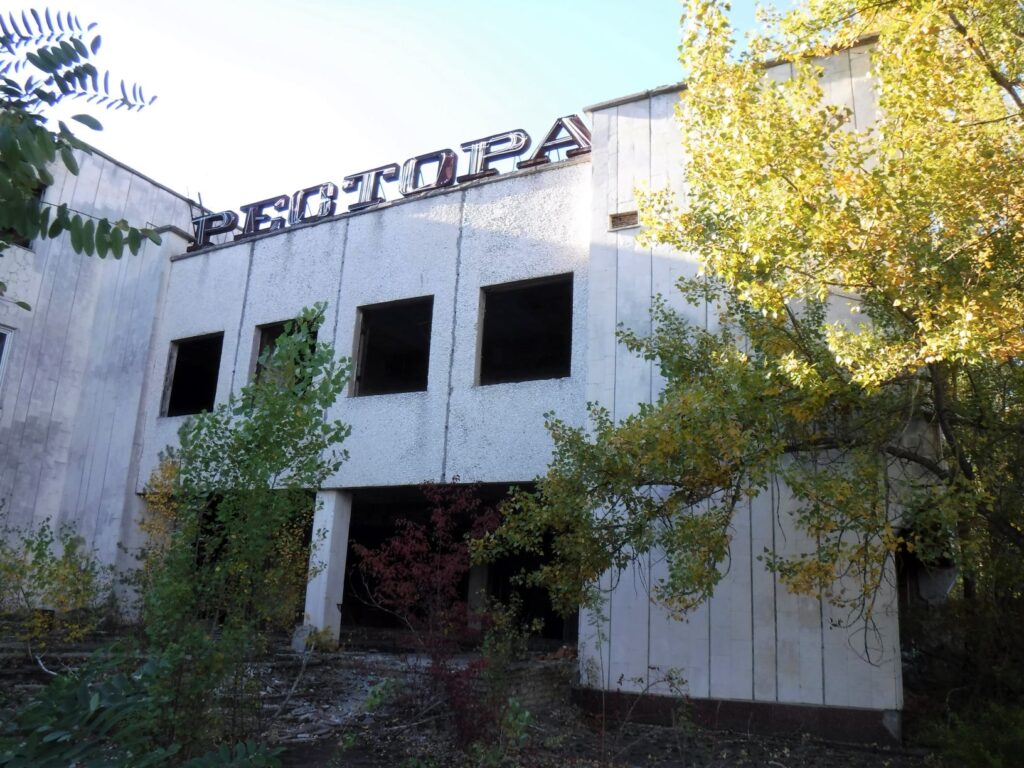
After a short drive we arrived within sight of the Chernobyl Nuclear Power Plant, and the massive steel shell built over reactor four to trap the remaining radioactive material. The bus pulled up at a permitted viewing area about half a kilometer from the Plant and we piled out for photos. Many of our Geiger counters began beeping to tell us the programmed upper limit of detected radiation had been reached. Although the counters default to a relatively moderate alarm level, it still clearly displayed the jump in radiation level as we neared the reactor.

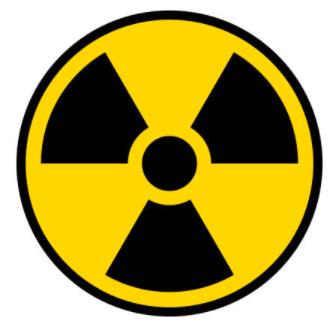
Reactor Viewing Area: 1.1 µSv/hr (microsieverts/hr)
We were getting close to ground zero. Somewhat surprisingly, we were able to drive up to the carpark right outside the reactor. More photos, but as this area was heavily restricted, we were only permitted to take pictures which included the Monument To Those Who Protected The World From Disaster. This memorial is dedicated to those who built the original concrete and steel ‘sarcophagus’ over reactor four.
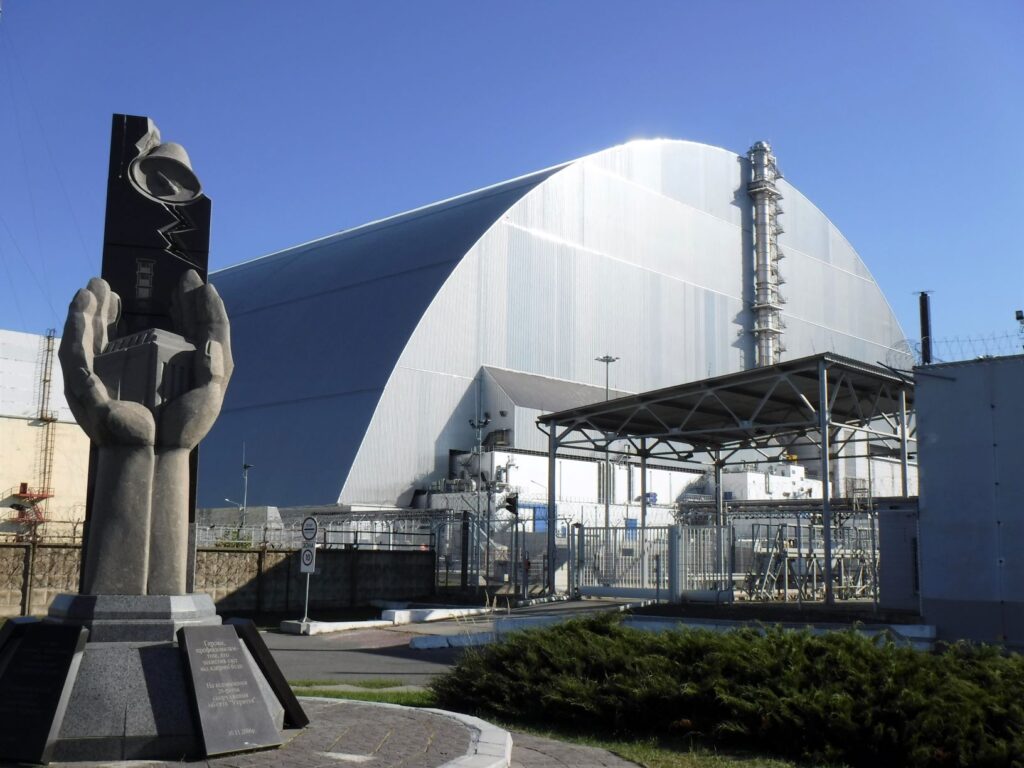
Our guide explained that prior to the installation of the ‘New Safe Confinement’ dome over the remains of reactor four (and its original concrete sarcophagus), radiation levels outside the dome were 3-4 times higher than current levels

Carpark outside reactor four dome: 1 µSv/hr
After leaving the reactor, we drove along a section of road through an area that received a big dump of radiation from the accident. Our guide told those sitting on the right hand side of the bus to put their Geiger counters up to the window, and once again the alarms started chiming. We were told that stopping along this section of road is forbidden.
The ‘educational visit’ then moved on to the town of Prypiat, about 3 kilometres from the Power Plant. Prypiat was built by the Russians to accommodate the builders of the facility, and those who would run and maintain it. It was designed to be the model, modern, socialist settlement, with workers and their families living in State-owned high-rise apartments.
The town had parks, schools, shops, restaurants and a hotel, and just under 50,000 residents in April 1986. Thirty-six hours after the accident, Prypiat was evacuated. Apparently everyone was told to stand outside their building at 2pm, where buses would come and take them away. Belongings, apart from essentials presumably, had to be left behind. Whilst waiting for the buses, kids played in the dirt, and everyone got a pretty good dose of radiation as reactor four continued to destroy itself.
Later in my stay in Kiev, I was told by a Ukrainian lady that people entered the abandoned town after the evacuation and looted both belongings and building materials. Goods were sold, and the cheap, second-hand building materials used in construction across Ukraine. If the story is true, who knows how much radioactive material found its way into peoples’ homes via the black market. And who knows if the marketeers were aware of the danger?
Cliche as it sounds, walking around Prypiat feels like you have stumbled onto a movie set. The forest is taking over, and an eerie feeling pervades the deserted township. You definitely get the feeling that something went very wrong here, which of course it did.
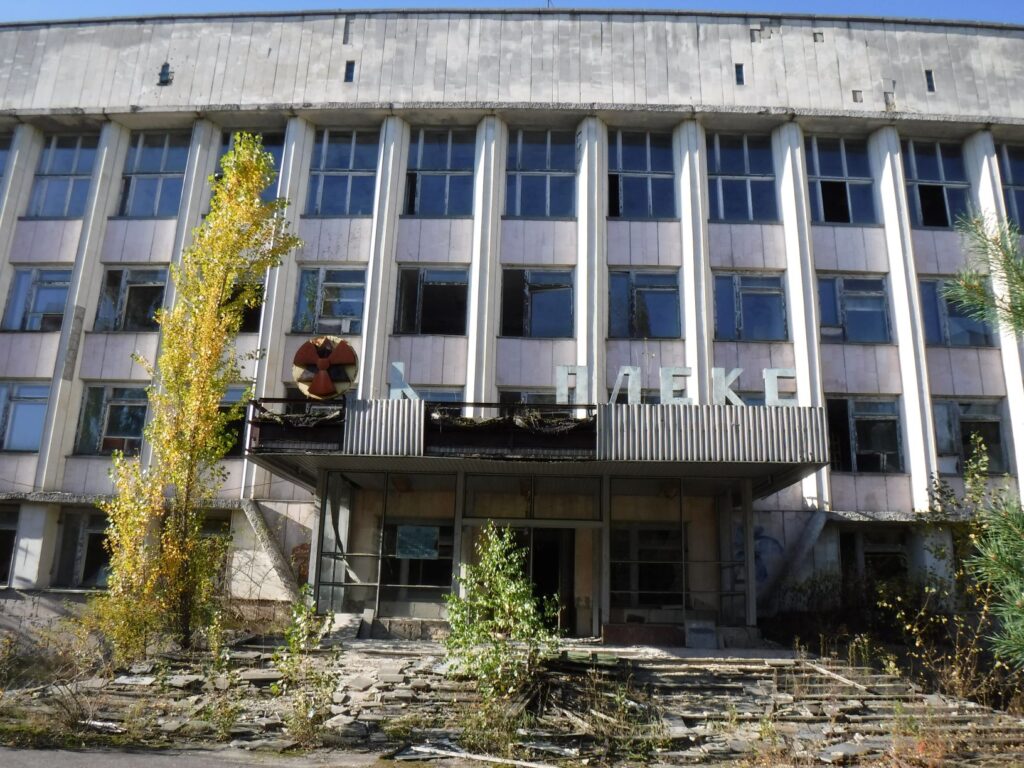
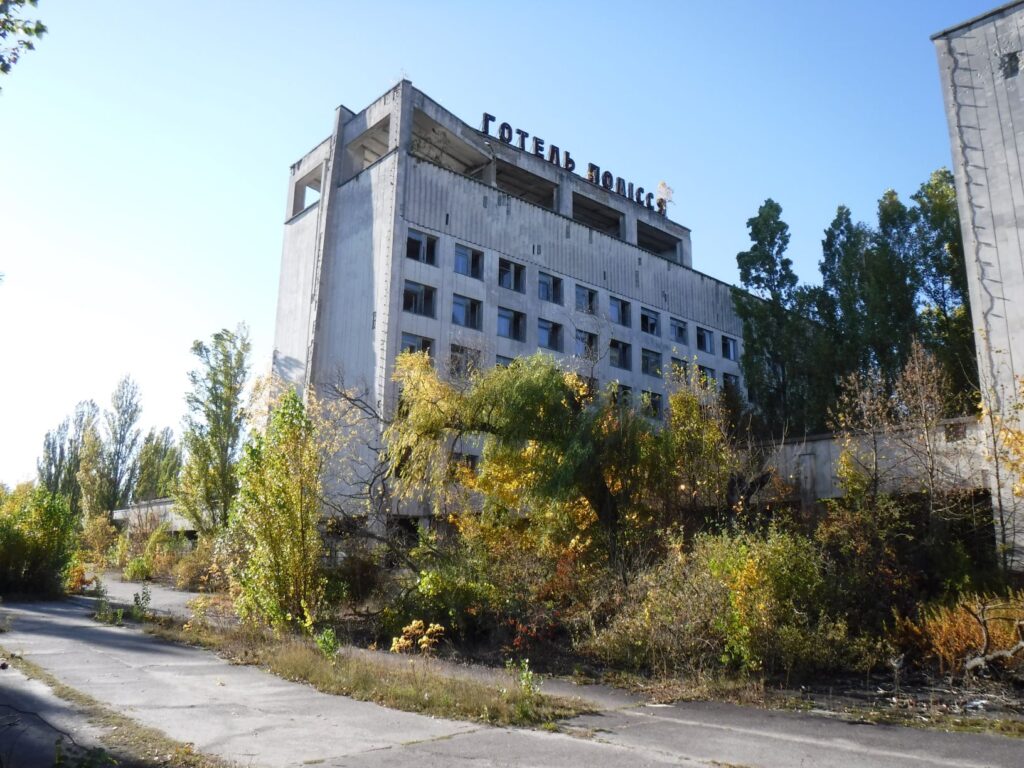
Near a derelict supermarket, our guide pointed out a particular radiation hotspot, emanating from a access cover. Several members of the group descended on the spot with ghoulish enthusiasm, holding their Geiger counters close to the spot and exclaiming as the reading climbed. I have to admit I was pretty interested too, but then started to wonder why the most poisoned spot we had seen thus far should be something to be excited about. After all, you wouldn’t go to a place where the worst pollution of a catastrophic oil leak had occurred and stare with gleeful amazement.
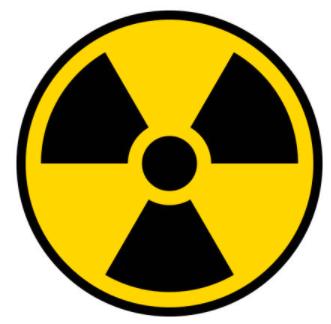
Hotspot outside Prypiat supermarket: 16.95 µSv/hr
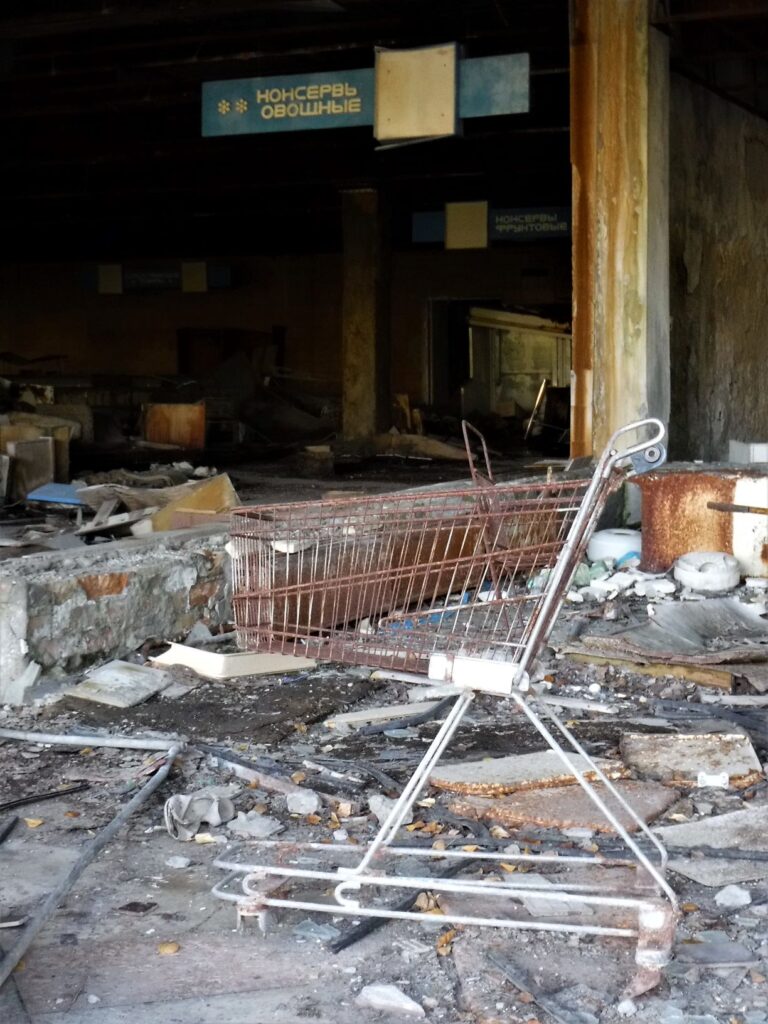
After walking past the supermarket and hotel, we made our way to the amusement park. This is the other famous part of Prypiat for photos, and it certainly is an emotive sight. The famous ferris wheel was a gift from the town to its people, to thank them for the great work they were doing. It was to open as part of the May Day celebrations on 1st May, but the accident and subsequent evacuation meant no-one ever rode on the Prypiat’s big wheel
Prypiat supermarket
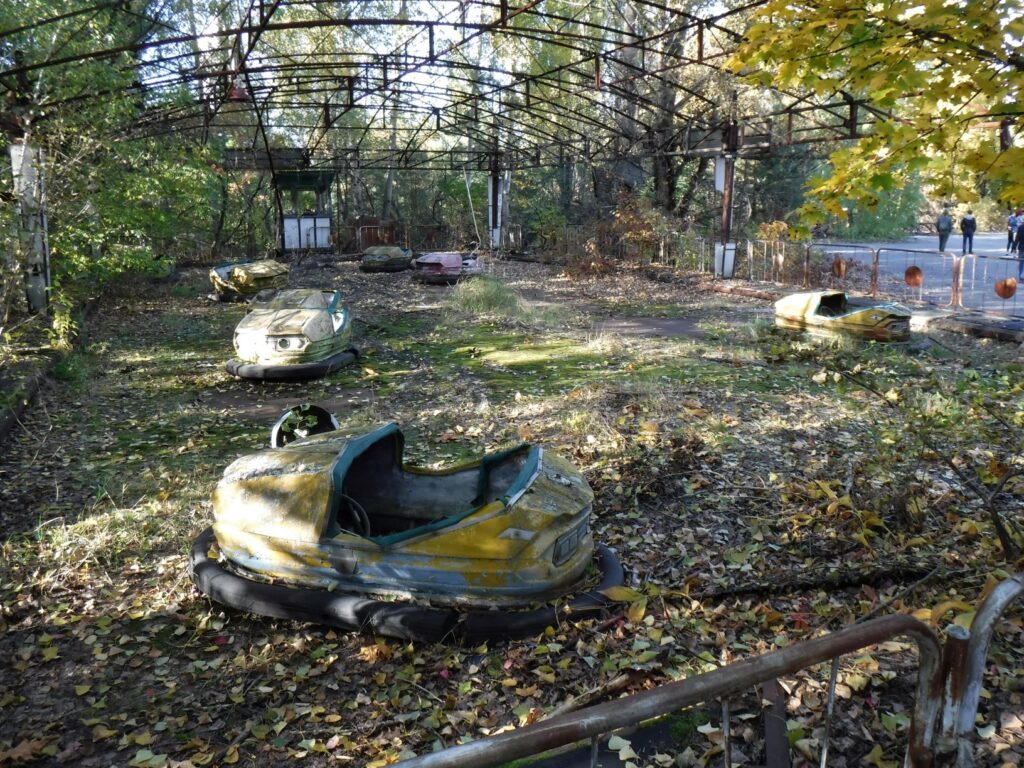

Dodgem cars and merry-go-round, Prypiat


Prypiat ferris wheel: 0.79 µSv/hr
Passing through the amusement park we walked through a flat area of regenerating forest. After a few minutes we arrived at a grandstand: we had just walked across a soccer pitch. The stadium was also scheduled to open on May Day, but no players ever took the pitch, and no spectators ever queued up and filed through the gates.
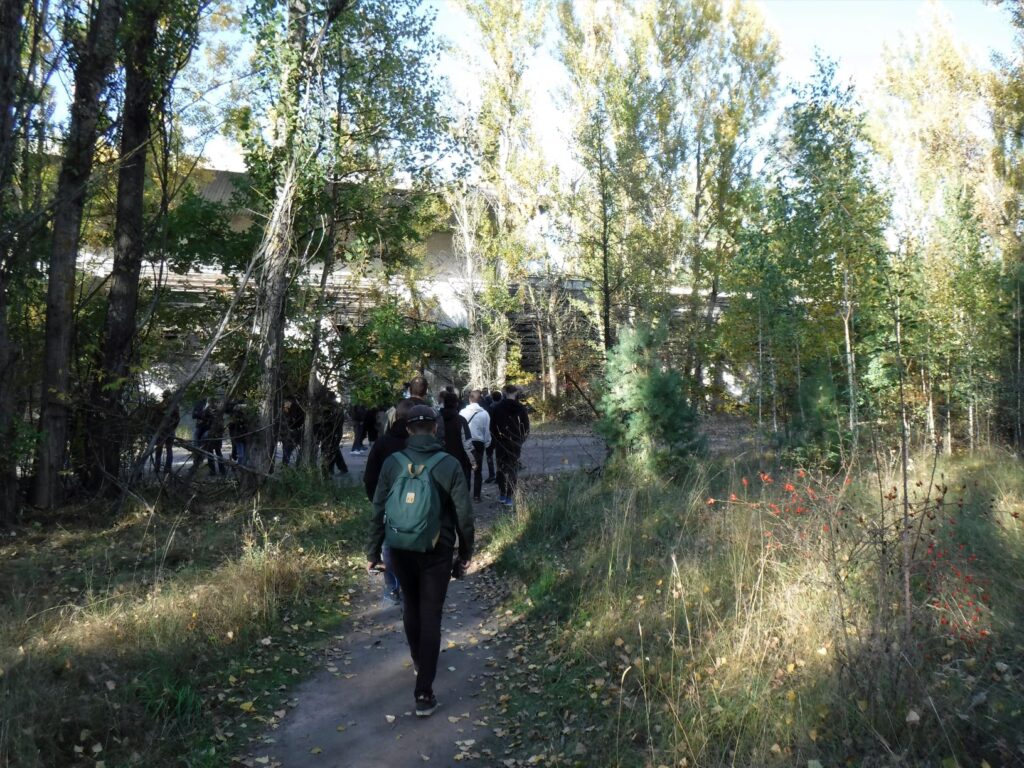

There are a lot of stray dogs within the Chernobyl exclusion zone, who I imagine must be exposed to, and ingest, high levels of radiation over their lifetimes. We were told that there is also a moose that walks the deserted streets of Prypiat, but unfortunately we didn’t see it.
From Prypiat we drove past Chernobyl town itself, which today houses the workers that are employed to ‘caretake’ the power station.

Interestingly, there are a number of people that have returned on their own accord and gone back home within the exclusion zone. Many are elderly, living out their days amongst the fallout.
Chernobyl town sign
It had been a pretty full day, and it was late afternoon before we were heading back out of the exclusion zone. Our guide walked through the bus picking up our dosimeters; she said someone is apparently collecting the data and keeping tabs on how much much radiation people are being exposed to during their ‘educational visit’. The guide then explained that anyone who had a Geiger counter could now check how much radiation they had copped through the day. We hadn’t actually been told to keep the Geiger counter switched on continuously, and being used to having to conserve battery life on gps/camera/phone while hiking I had turned mine off between readings. So unfortunately I could not discover my personal dose. However our guide told us that the average exposure is 1-3µSv for the seven hours within the exclusion zone.
When we reached Lviv checkpoint, we were told to get off the bus and line up, then file through a building containing Soviet-era gamma radiation detecting units. There were three narrow booths, and when it was my turn, I stepped in and turned left to face the machine. We were instructed to place our hands on metal sensors on the sides of the booth, palms inward like your are clasping a friend by the upper arms. We had to wait until the top light in a column of three switched off, and the one below it lit up with an audible clack. It reminded me of stories I have heard about detecting equipment in the Church of Scientology. Apparently if the second light doesn’t come on but the third one in the column does, you’re in a world of gamma radiation trouble. I don’t know what happens next but I expect it would be unpleasant. Thankfully we all passed the test. So did the bus, whose wheels and wheel arches were scanned by an officer with a hockey stick-shaped Geiger counter. We repeated the procedure at Dytyatky checkpoint before boarding the bus and leaving the Chenobyl exclusion zone for the two hour trip back to Kiev.
When I got back to my apartment that evening, I put all my clothes in the washing machine straight away, gave my boots a scrub in the bath, wiped down my backpack, phone and camera, then had a very thorough wash in the shower. Regardless of all the reassurances we had been given about our safety during our visit to Chernobyl, I still felt better after I, and everything I had taken on the educational visit, had been thoroughly cleaned.
So was the trip to Chernobyl safe? If your dentist x-rays your teeth you will receive about the same dose of radiation as you absorb spending seven hours within the restricted zone at Chernobyl. Assuming you follow the safety directives issued by the zone management agency and the ‘tour’ guide, and don’t have an accident, then yes it is safe to visit. That does not mean, of course, that it is a safe place to live, at least by Australian standards.
The average annual background radiation level in Australia is 1500µSv 1. The International Commission on Radiological Protection ‘…recommends that any exposure above the natural background radiation should be kept as low as reasonably achievable, but below the individual dose limits…(which) for members of the general public, is 1 mSv (1000µSv per year)2‘. Therefore, to stay within these limits, Aussies need to be exposed to a maximum overall dose of 2500 µSv per year3.
If you decided to move into the Kopachi Kindergarten at Prypiat, you would reach the Aussie annual 2500µSv limit in 226 days. Or 131 days if you lived next to the ferris wheel, 104 days outside reactor four, or six days next to the hotspot near the Prypiat supermarket. This is a very simplistic comparison of course, and doesn’t include other factors such as the risk of ingesting radioactive particles within the exclusion zone.
Chernobyl is arguably one of the world’s top Dark Tourism destinations. The entry ticket to the restricted area reads ‘Do not act as in an amusement park. It is a place of nuclear disaster and is still pretty dangerous. So act reasonably and responsibly.’ The deaths, illness, displacement and environmental damage caused by the accident are other good reasons not to treat Chernobyl like a fun park. During my travels I have seen ancient places devalued and disrespected by tourists treating them as mere backdrops for tacky holiday selfies and gag photos. Thankfully I saw none of this behaviour at Chernobyl.
The day at Chernobyl had been an amazing experience: standing outside reactor four where everything had gone so terribly wrong on April 26, 1986; wandering the deserted townships emptied by the invisible danger unleashed by the accident; learning about the social and political stage upon which the drama unfolded within the USSR, and where it all sat in the saga of the Cold War. Perhaps this is what I had trouble articulating before my visit, when people would ask why I wished to go to the exclusion zone. You can certainly learn a lot from secondary sources, but nothing compares to seeing a place like Chernobyl first-hand.
1Australian Radiation Protection and Nuclear Safety Agency, ‘Ionising Radiation and Health‘, Commonwealth of Australia
2International Atomic Energy Agency 2021, ‘Radiation in Everyday LIfe’, International Atomic Energy Agency, Vienna
3Australian Government Department of Health 2012, ‘Radiation Protection‘, Commonwealth of Australia
For more on the Chernobyl nuclear accident click here
If you liked this post, you may also enjoy Visiting Chernobyl, Part I, Museum of Strategic Missile Forces
Do you have a particular interest in World War I, II and the Cold War? Check out my other blog Ghosts of War. If you enjoy military history, and want to know what it’s like to visit both significant and lesser-known wartime locations today, there’s something there for you.
Leave a Reply